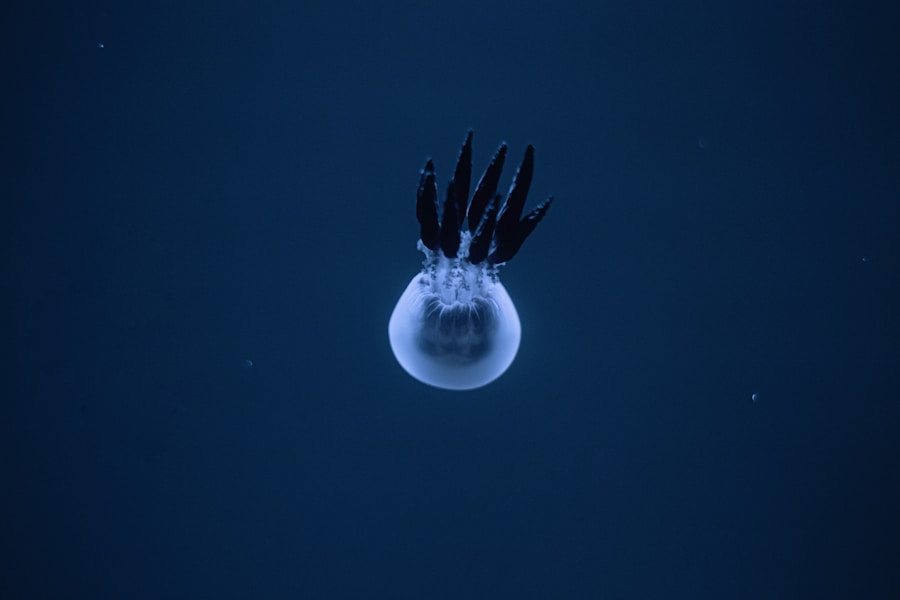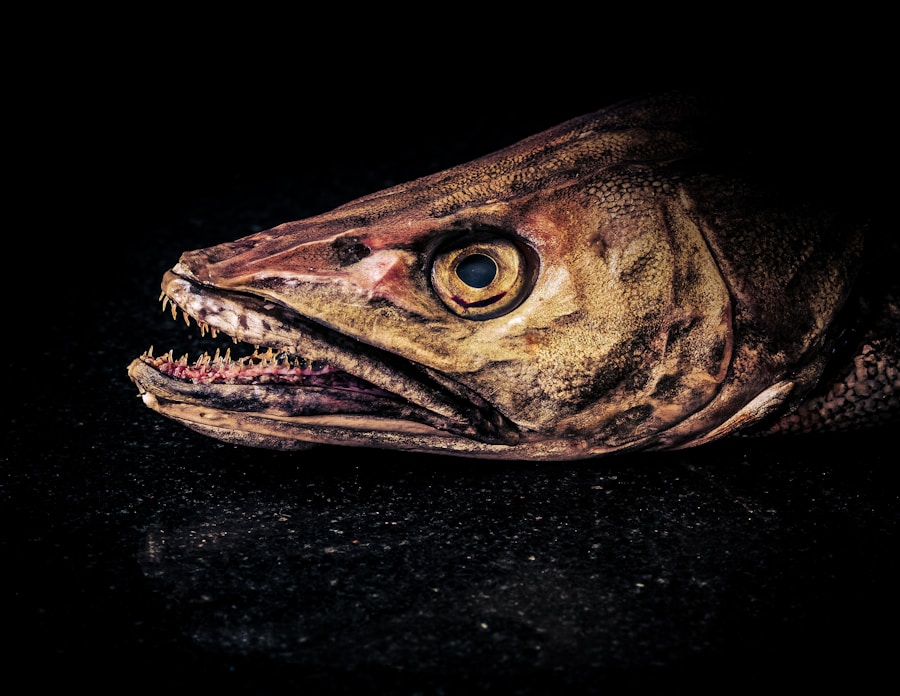Download links
How to install The Mysterious World of the Angler Fish APK?
1. Tap the downloaded The Mysterious World of the Angler Fish APK file.
2. Touch install.
3. Follow the steps on the screen.
Description
The angler fish, a fascinating and often misunderstood creature of the deep sea, has captivated the imaginations of marine biologists and the general public alike. Found primarily in the dark depths of the ocean, these fish are renowned for their unique adaptations that allow them to thrive in an environment characterized by extreme pressure, cold temperatures, and complete darkness. The angler fish belongs to the order Lophiiformes, which encompasses over 200 species, each exhibiting a range of intriguing traits.
Their most notable feature is the bioluminescent lure that protrudes from their heads, which they use to attract prey in the abyssal depths. Angler fish inhabit various oceanic regions, from the continental shelf to the deep-sea trenches. They are particularly abundant in the Atlantic and Antarctic Oceans, where they have adapted to their surroundings in remarkable ways.
The angler fish’s ability to survive in such inhospitable environments has made it a subject of extensive scientific research, shedding light on evolutionary biology and the complexities of marine ecosystems. As we delve deeper into the world of angler fish, we will explore their physical characteristics, reproductive strategies, hunting techniques, cultural significance, and conservation efforts aimed at protecting these enigmatic creatures.
Key Takeaways
- The angler fish is a deep-sea creature known for its bioluminescent lure and large, fang-like teeth.
- Angler fish are typically small, with the females being much larger than the males, and they have a unique method of reproduction called sexual parasitism.
- The female angler fish uses a bioluminescent lure to attract prey, and then uses its large mouth and sharp teeth to capture and consume its food.
- The angler fish has been featured in popular culture, including movies, literature, and even as a character in video games.
- Conservation efforts for the angler fish are important due to the threats of deep-sea fishing and habitat destruction, and researchers are working to better understand and protect this unique species.
Physical Characteristics of the Angler Fish
Bioluminescent Lures
One of the most distinctive features of angler fish is the illicium, a modified dorsal fin spine that extends from their heads and is tipped with a bioluminescent lure. This lure emits light due to the presence of symbiotic bacteria that produce bioluminescence, creating an enticing glow that attracts unsuspecting prey.
Body Structure and Adaptations
In addition to their unique lures, angler fish possess a remarkable body structure that aids in their survival. Many species have large mouths filled with sharp teeth, allowing them to capture and consume prey that is often larger than themselves. Their bodies are typically elongated and flattened, which helps them navigate through the dense waters of their deep-sea habitats.
Sexual Dimorphism and Mating Habits
Some angler fish also exhibit sexual dimorphism, where females are significantly larger than males. This size difference is particularly pronounced in certain species, where females can grow up to 60 times larger than their male counterparts. The males are often much smaller and have evolved to become parasitic mates, attaching themselves to females for reproduction.
The Unique Reproduction of the Angler Fish

The reproductive strategies of angler fish are as peculiar as their physical characteristics. In many species, males are much smaller than females and have adapted a unique method of reproduction that involves parasitism. When a male encounters a female, he bites into her flesh and releases enzymes that fuse his body to hers.
This process allows the male to become a permanent mate, providing sperm for fertilization while relying on the female for sustenance. This extraordinary adaptation ensures that males can reproduce without expending energy searching for mates in the vastness of the ocean. The reproductive cycle of angler fish is not only fascinating but also complex.
Females release eggs into the water column, where they are fertilized by the male’s sperm. Depending on the species, a single female can produce thousands of eggs at once. These eggs are often buoyant and float to the surface, where they hatch into larvae that drift with ocean currents.
The larvae undergo several developmental stages before eventually settling into deeper waters as juvenile angler fish. This life cycle highlights the challenges faced by angler fish in terms of survival and reproduction in an environment where predation is high and food sources are scarce.
The Hunting Techniques of the Angler Fish
| Technique | Description |
|---|---|
| Bioluminescent Lure | The angler fish uses a bioluminescent lure to attract prey in the dark depths of the ocean. |
| Ambush Predation | It relies on its camouflage and patience to ambush unsuspecting prey that come close to its mouth. |
| Large Mouth | The angler fish has a large mouth and expandable stomach to consume prey larger than itself. |
| Slow Movement | It moves slowly and conserves energy, waiting for the right moment to strike at its prey. |
Angler fish are masterful hunters, employing a combination of stealth and deception to capture their prey. Their bioluminescent lure plays a crucial role in this process, acting as a beacon in the dark depths of the ocean. By gently swaying their lures back and forth, angler fish can mimic the movements of small prey, enticing curious organisms to come closer.
Once an unsuspecting victim approaches, the angler fish strikes with lightning speed, using its large mouth to engulf prey whole. In addition to their lures, angler fish have developed other hunting techniques that enhance their effectiveness as predators.
Their ability to remain motionless for extended periods allows them to blend seamlessly into their surroundings, making it difficult for potential prey to detect them. Furthermore, angler fish possess highly expandable stomachs that enable them to consume prey much larger than themselves. This adaptation is particularly advantageous in deep-sea environments where food can be scarce.
The Role of the Angler Fish in Popular Culture
The angler fish has made its mark on popular culture, often serving as a symbol of the mysterious and sometimes terrifying aspects of the deep sea. Its unique appearance and predatory behavior have inspired various forms of media, from documentaries to fictional works. In films like “Finding Nemo,” angler fish are depicted as fearsome creatures lurking in the depths, showcasing their bioluminescent lures as both alluring and dangerous.
Such portrayals contribute to a broader fascination with marine life and highlight the importance of understanding these creatures beyond their fearsome reputation. Moreover, angler fish have become iconic representations of deep-sea exploration and discovery. Their unusual adaptations serve as a reminder of the vast diversity of life that exists beneath the ocean’s surface.
Scientists and artists alike have drawn inspiration from these creatures, leading to artistic interpretations that celebrate their beauty and strangeness. The angler fish’s role in popular culture underscores not only its biological significance but also its ability to capture human imagination and curiosity about the natural world.
Conservation Efforts for the Angler Fish

Threats to Their Survival
In addition to overfishing, habitat destruction caused by deep-sea mining and climate change poses further risks to their survival. The destruction of their habitats not only affects angler fish but also has a ripple effect on the entire marine ecosystem.
Conservation Efforts
Conservation efforts aimed at protecting angler fish are essential for maintaining healthy marine ecosystems. Organizations dedicated to marine conservation advocate for sustainable fishing practices and the establishment of marine protected areas (MPAs) where fishing is restricted or prohibited. These MPAs provide safe havens for various marine species, including angler fish, allowing populations to recover and thrive in their natural habitats.
The Importance of Preserving Their Habitats
Furthermore, ongoing research into angler fish biology and ecology is crucial for informing conservation strategies and ensuring that these remarkable creatures continue to inhabit our oceans for generations to come. Preserving their habitats is vital not only for their survival but also for maintaining the delicate balance of marine ecosystems worldwide. As we strive to understand and protect these remarkable creatures, it becomes increasingly clear that their habitats are essential for the health of our oceans.
If you’re interested in learning more about online fishing, be sure to check out this article on Taya365. It provides a comprehensive guide to mastering the art of online fishing with Taya365, a popular platform for anglers of all levels. In addition to learning about angler fish, you can also explore the top-rated fishing apps in this article and discover the ultimate guide to Taya365 online fishing in this article. Happy fishing!
FAQs
What is an angler fish?
An angler fish is a deep-sea fish known for its unique appearance and hunting method. It has a large head with a wide mouth and sharp teeth, and a bioluminescent lure that it uses to attract prey.
Where do angler fish live?
Angler fish are found in the deep waters of the Atlantic and Antarctic oceans, as well as in the waters around Australia and New Zealand. They typically live at depths of 200 to 2,000 meters.
How do angler fish catch their prey?
Angler fish use a bioluminescent lure, called an esca, to attract prey in the dark depths of the ocean. When a smaller fish or crustacean approaches the lure, the angler fish quickly snaps its jaws shut, capturing its prey.
What do angler fish eat?
Angler fish are carnivorous and primarily feed on small fish, crustaceans, and other invertebrates. They are opportunistic feeders and will eat whatever prey is available in their deep-sea habitat.
Are angler fish dangerous to humans?
While angler fish are not typically dangerous to humans, they have been known to bite when handled. Their sharp teeth and powerful jaws can cause injury, and some species also have venomous spines.
How do angler fish reproduce?
Angler fish have a unique mating behavior where the much smaller male fuses to the body of the larger female, eventually losing its eyes and internal organs and becoming a permanent parasite. This allows the male to provide sperm to the female whenever she is ready to spawn.





